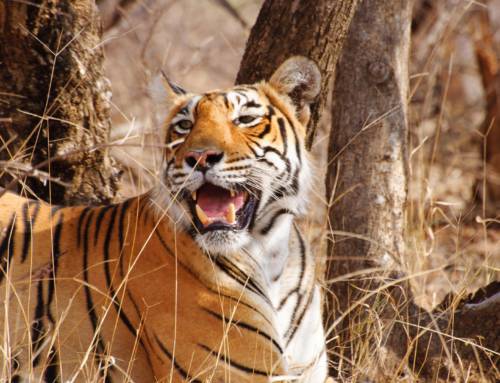Authors: Anubhav Vanamamalai and Dr. Krithi K. Karanth (also the authors of the paper on Wild Seve)
In India, large scale land conversion for agricultural and industrial needs has placed the rural communities in direct contact with wildlife. Human-wildlife interactions are a common occurrence for our rural communities, especially those living around fragmented protected wildlife areas. Many animals frequently use spaces outside protected areas, and their free movement in the greater landscape is important for their survival. Human-wildlife interactions can have an immeasurable positive impact on recreation and wildlife tourism, education, impart psychological benefits, and provide ecosystem services. In parallel, negative interactions, leading to loss of livelihood, property, human injury and death, or resulting in harm to the wildlife are termed human-wildlife conflict (HWC) incidents. Across India, states have created policies to monitor and address negative interactions, with financial instruments to compensate losses being the most prevalent.
Our previous research indicates that India records over 80,000 HWC incidents annually, with the state of Karnataka leading in the number of cases reported and in the amount of ex-gratia compensation payments provided. Unfortunately, inadequate policies and issues with their implementation often results in a feeling of resentment in rural communities. Evidence of this intolerance is often highlighted in the media, with cases of electrocution, poisoning and violence towards more conflict-prone species, such as tigers, leopards, and elephants. Financial instruments, such as ex-gratia payments for losses require easy and timely access for reducing retaliation by people. By removing the hurdles of transaction costs and difficult bureaucratic process and logistics, we can ensure greater participation of the community and support the most vulnerable through government-sponsored schemes targeting HWC.
CWS’ latest research paper, published in the international journal Frontiers in Ecology and Evolution, highlights the implementation, design, and impact of the Wild Seve program between July 2015 and June 2019. The program recorded over 13,000 incidents of HWC conflict around the Bandipur and Nagarahole National parks, with ~ 94% of the cases attributed to elephants. Registered HWC incidents during this period include 12,978 of crop loss and property damage, 782 livestock predation events, and 48 incidents of human injury and death.
Wild Seve utilised a simple publicity campaign to spread awareness of their toll-free helpline across ~2100 km2 and 600 village settlements. In an area where literacy rates were as low as 51%, the use of accessible communication and technology was vital to ensure active participation. Wild Seve staff were recruited from local communities and were trained in collecting long-term high quality data and capacity building. While incidents were registered by the program, processing and disbursements of the claims were implemented by the Government of Karnataka through the Karnataka Forest Department. The program could not effectively track each claim as these processes were internal to the government agency responsible. However, the program noted that at least 3,819 claims had received ex-gratia payments, amounting to $157,474 (>INR 1 crore). The long-term and ongoing data collection and management established by Wild Seve enabled identification of especially vulnerable households and villages. The program then facilitated the construction of 48 predator-proof livestock sheds, which have been effective in safeguarding livestock and preventing repeat predation incidents.
The authors state that Wild Seve was successful in helping bridge the divide between the people and government-sponsored schemes. They note, however, that there are other factors that need to be addressed to effectively ensure long-term co-existence between human communities and wildlife in the country. They report that the use of open-source technology and a mobile data collection platform allowed them to keep the process accessible, inexpensive, and transparent. The model of Wild Seve as a conservation intervention is one that the authors believe can be easily adapted to a wide range of situations, and be implemented across human-wildlife conflict prone regions across the world. Additionally, the Wild Seve program, in partnership with Vidhi Centre for Legal Policy, has also helped identify gaps in existing policy, with the authors arguing for a comprehensive human-wildlife conflict law in Karnataka.
Research Article: Wild Seve: A Novel Conservation Intervention to Monitor and Address Human-Wildlife Conflict – Krithi K Karanth and Anubhav Vanamamalai. Frontiers in Ecology and Evolution (Article 198, Volume 8 – June 2020; doi: 10.3389/fevo.2020.00198)
The open-access (free) paper can be found here.
Find the Kannada translation here.





